Stranger in My Own Hometown: Edward Yang, the New Cinema,
and A BRIGHTER SUMMER DAY
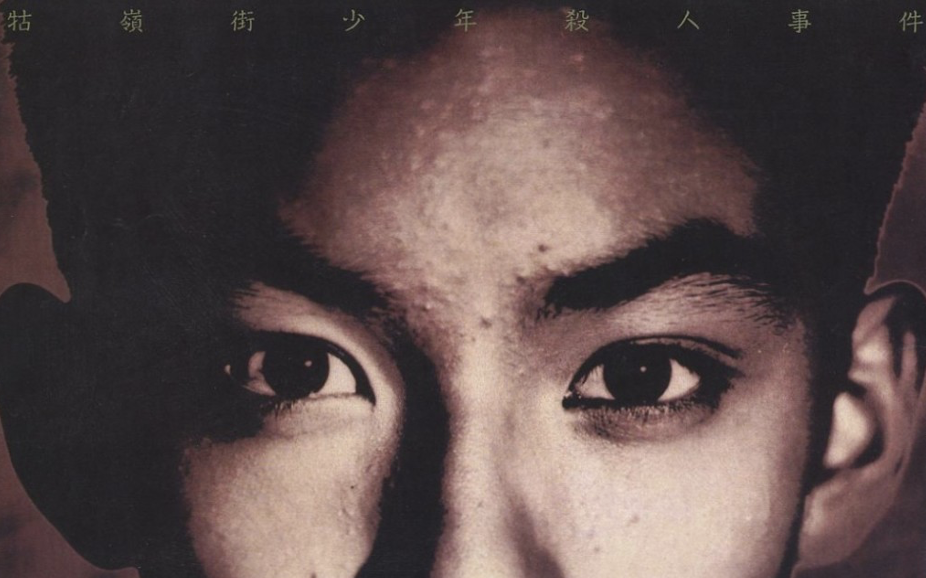 Article Written by: Josh Martin, 2016 With A Brighter Summer Day playing at the AFS through this weekend (first week of April 2024), we’re resharing an article on the film written by AAAFF Special Programs & Film Programmer, Josh Martin, back in 2016.
Article Written by: Josh Martin, 2016 With A Brighter Summer Day playing at the AFS through this weekend (first week of April 2024), we’re resharing an article on the film written by AAAFF Special Programs & Film Programmer, Josh Martin, back in 2016.
The “New Cinema”—the 1980s explosion of talent that put Taiwanese film on the world map—is also known as the “Taiwanese New Wave,” part of a still-prevalent tendency to liken any emergent national cinema to the French example of the ’50s and ’60s. In at least one small and accidental sense, the analogy is apt. Much as Godard and Truffaut are often upheld as the twin pillars of the nouvelle vague, two figures of Taiwan’s New Wave loom above the others. One is Hou Hsiao-hsien, who before his recent retirement was something of a one-man force in Taiwanese cinema. The other is Edward Yang, who died in 2007 and left behind seven features, every one a masterpiece or something close to it.
Unfortunately, neither Hou nor Yang have had the exposure accorded to Godard and Truffaut. In Yang’s case, only his swan song Yi Yi (2000) received a U.S. release. Limited access to both filmmakers’ work led some to propose a simplistic, binary opposition, with Hou as the chronicler of Taiwan’s past and Yang of its present. This was never entirely accurate for Hou, who started with contemporary features before switching to period pieces; in any case, he’s now widely recognized for modern dramas like Goodbye South, Goodbye (1996). Yang, for his part, made a single period film halfway through his too-short career. Praised to the skies by cinephiles lucky enough to see it, it remained virtually inaccessible to most of the viewers who discovered Yang through Yi Yi—an injustice only finally corrected in 2016 with the first U.S. release of his epochal A Brighter Summer Day (1991).
No definite explanation has ever been given for the film’s frustrating unavailability, but part of it might be down to runtime. In Yang’s preferred edit, A Brighter Summer Day clocks in at nearly four hours. Most theatrical screenings in the ’90s used a cut-down three-hour version, but this still must’ve seemed like a daunting commercial prospect—especially in the U.S., where the New Cinema was long neglected by critics and distributors. Many Taiwanese films of the period also suffer from unspecified “rights issues,” which may explain why Yang’s film was formerly available to home viewers only on laserdisc, Video CD, and Nth-generation bootlegs thereof. (As a small consolation, the video releases used the full 237-minute cut, as does the new restoration.)
Despite its epic length, A Brighter Summer Day was inspired by a seemingly minor event: a 1961 murder involving students at Yang’s Taipei high school. In case anyone thinks this is a spoiler, the film’s Chinese title is simply “The Guling Street Youth Murder Incident,” and the original marketing materials left little doubt about the identity of the killer. For Yang, the murder is much less important than the social milieu in which it took place, which also happened to be his own: that of young mainlanders in postwar Taiwan.
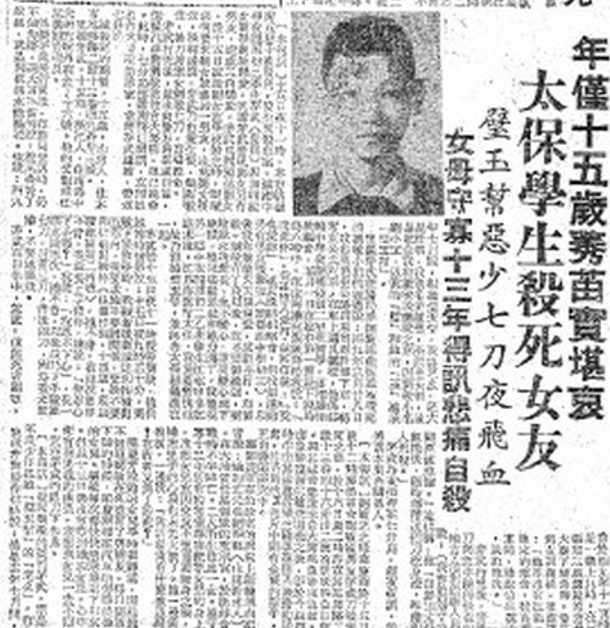
Newspaper account of the “Mao Wu Incident,” 1961
“Mainlanders” here refers to the mainland Chinese who moved to Taiwan after World War II. The Allied victory ended the island’s fifty-year status as a Japanese colony, and control passed to the Republic of China (ROC), led by Chiang Kai-shek’s Nationalist Party (Kuomintang/KMT). The flow of migrants became a flood during the Chinese Civil War and the Communist takeover of the mainland, which culminated in the 1949 proclamation of the People’s Republic. Most expected that Taiwan would fall in short order, but with the onset of the Korean War, the U.S. extended its protection to Chiang’s staunchly anti-communist government. Thus, the old republic survived on Taiwan and a few smaller islands, recognized by the UN and much of the international community as the legitimate government of all China.
Taiwan’s domestic situation was complicated by the fact that the new arrivals from the mainland had to live alongside the people who were already there. In Mandarin—the official language imposed by the KMT—the “native” Taiwanese were dubbed benshengren, or roughly “local-province people,” while the mainlanders were waishengren, “outside-province people.” This terminology reflected the KMT’s position that Taiwan was not a country, but just one of several dozen provinces of the Republic of China. (Taiwan retained a vestigial provincial government until 2018, which eventually did little except issue license plates.) The KMT kept Taiwan under martial law and issued a constant stream of propaganda insisting that the ROC would soon recover the mainland. This was an appealing prospect for many waishengren who moved under duress and had no great affection for Taiwan. In A Brighter Summer Day, this attitude is epitomized by an old mainlander who waxes nostalgic about his hometown’s drainage system. Younger waishengren had few or no memories of the mainland, yet were taught by their families and government to regard Taiwan as a temporary way station pending their return “home.”
This in-between state contributed to a sense of rootlessness among young waishengren, and few are more rootless than A Brighter Summer Day’s Xiao Si’r, played by first-time actor Chang Chen. (Chang later became one of Taiwan’s biggest stars, appearing in blockbusters like Red Cliff and Crouching Tiger, Hidden Dragon.) A congenital outsider, Si’r at first seems indifferent to almost everything, particularly his schoolwork. Consigned to a delinquent-riddled night school, he hangs out with the “Little Park Gang” but never quite joins in. His most constant friend is a younger boy called Xiao Mao Wang—”Little Cat King”—who has subsumed his own identity in American pop music, right down to his name. (In Chinese, Elvis was and is commonly known by the nickname “Cat King.”)
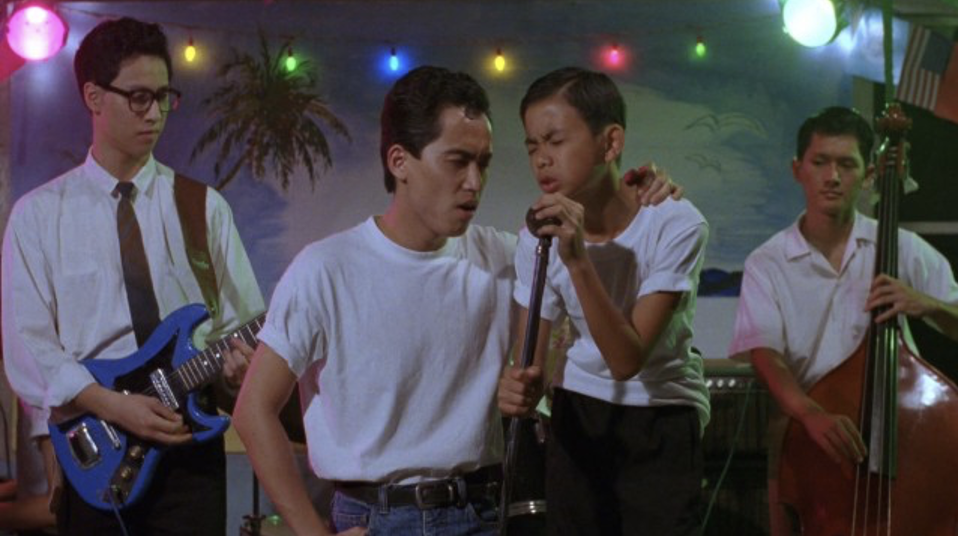
The “Little Cat King” (Wong Chi-zan) in concert
Both Si’r and Mao Wang are based on real-life figures (the actual Mao Wang even makes a cameo performing “Don’t Be Cruel”). But a strong autobiographical impulse ran through the New Cinema, and it’s tempting to see both as partial surrogates for Yang. By Yang’s own admission, he was a withdrawn adolescent who was uncomfortable around girls and preferred to read and draw comics. He was also deeply immersed in American pop culture: his love of cinema was sparked by a Hollywood Western (John Sturges’ Escape from Fort Bravo), and he avidly consumed rock music on the American Forces Network. Yang spent the 1970s in the U.S., mostly as a computer engineer in Seattle, and returned to Taiwan in 1980 to pursue a filmmaking career.
Yang arrived at a time both dangerous and auspicious for Taiwan’s film sector. Dangerous, because the industry seemed on the brink of collapse, having hemorrhaged viewers to Hong Kong and Hollywood; auspicious, because the powers that be were desperate enough to embrace untried talent—including Yang, who was one of four rookies commissioned to make a short for the 1982 omnibus In Our Time. Remarkably, the film was produced by the KMT-owned Central Motion Picture Corporation (CMPC), not previously known for its envelope-pushing tendencies. In Our Time is retrospectively judged the beginning of the New Cinema, and Yang’s segment “Desires” was almost universally seen as the standout.
Observers soon bracketed Yang with other up-and-comers—Hou Hsiao-hsien, Chen Kun-hou, Wan Jen, Chang Yi, and more—as part of an entire movement shaking up Taiwanese film. The filmmakers would gather at Yang’s house to discuss movies they’d seen and the ones they planned to make. They pitched in on each other’s projects; for example, Yang chose the English titles for some of Hou’s early films, along with the classical music pieces heard within. Hou not only co-wrote and starred in Yang’s sophomore feature Taipei Story (1985), but also mortgaged his house to put up half the budget. The gamble failed when the film closed after four days in Taipei cinemas. Yang and Hou then co-directed a series of music videos for Tsai Chin, Yang’s first wife and the co-star of Taipei Story.
The fate of Taipei Story highlighted the New Cinema’s mixed success. On the one hand, Taiwanese cinema became prominent on the global stage, fulfilling the government’s hope that “cultural diplomacy” could help offset the catastrophes of the 1970s. (The ROC was expelled from the UN in 1971, and in 1979 the U.S. switched its recognition from Taipei to Beijing.) On the other hand, even relatively popular New Cinema films, like Yang’s The Terrorizers (1986), were little seen by domestic viewers.
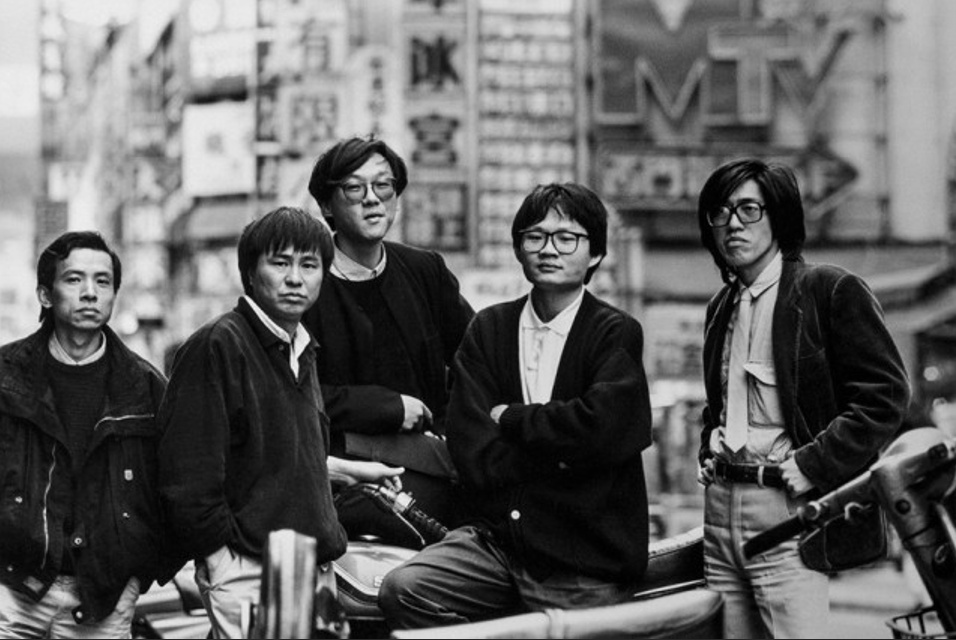
(from left) Wu Nien-jen, Hou Hsiao-hsien, Edward Yang, Chen Kuo-fu, Jan Hung-tze
When Yang and 53 other film workers issued a “Taiwan Cinema Manifesto” in 1987, it read less like a call to arms and more like a last-ditch plea, beseeching the CMPC to shift its support from white elephants like The Kinmen Bombs (1986) and promote “another kind of cinema.” This manifesto is widely viewed as the end of the New Cinema; to quote James Uddens, “Never again would this group act in such a collective manner, and many would never make another film.”
Still, some of the old collective spirit lingered on. Yang, Hou, and Chen Kun-hou founded the company Co-op Films to produce their own movies. Its first production, Hou’s A City of Sadness (1989), was a post facto vindication of the New Cinema, winning the Venice Film Festival’s top prize and playing to huge crowds in Taiwan. Its box-office success was largely due to its portrayal of a formerly taboo historical trauma: the suppression of a 1947 uprising against KMT (mis)rule. The end of martial law in 1987 cleared the way for such frank examinations of Taiwan’s buried past, and A Brighter Summer Day both continues and extends A City of Sadness’ depiction of the KMT’s “White Terror.”
The basic tension in Hou’s film is between a benshengren family and assorted waishengren newcomers. In Yang’s, the divisions are less clear-cut. The Little Park boys, whose varied accents reflect their origins in different parts of the mainland, are opposed by the military brats of the “217 Gang,” named for one of the numerous waishengren military communities founded after the KMT’s retreat. The 217ers are linked by family background, and Little Park by seemingly little more than a shared fondness for imported rock’n’roll. Their mainland regional identities have little currency in Taiwan, yet they cannot easily embrace a Taiwanese identity, since to do so would be to (illegally) admit that the mainland is lost. Only “Honey,” Little Park’s fugitive leader, sees past the horizons drawn by his elders: he emerges from hiding speaking Hokkien, the native language of most Taiwanese, and bluntly declares that “There’s no future with these waishengren kids.” But for the rest of those “waishengren kids,” the gangs form a redoubt against the insecurity of their imposed outsider status.
This permanent unease is part and parcel of the mainland Chinese patrimony handed down to the young waishengren—a patrimony embodied, naturally enough, by Si’r’s father Chang Chü. Played by Chang Chen’s real-life father Chang Kuo-chu, he is, like Yang’s father, a civil servant from Guangzhou by way of Shanghai. The historical model for Si’r had an apparently happy family life; not so in the film, where Chang Chü struggles to put food on the table. His sense of inadequacy is compounded by his unsuccessful attempt to keep Si’r out of night school and a general feeling that he has failed his fourth child.
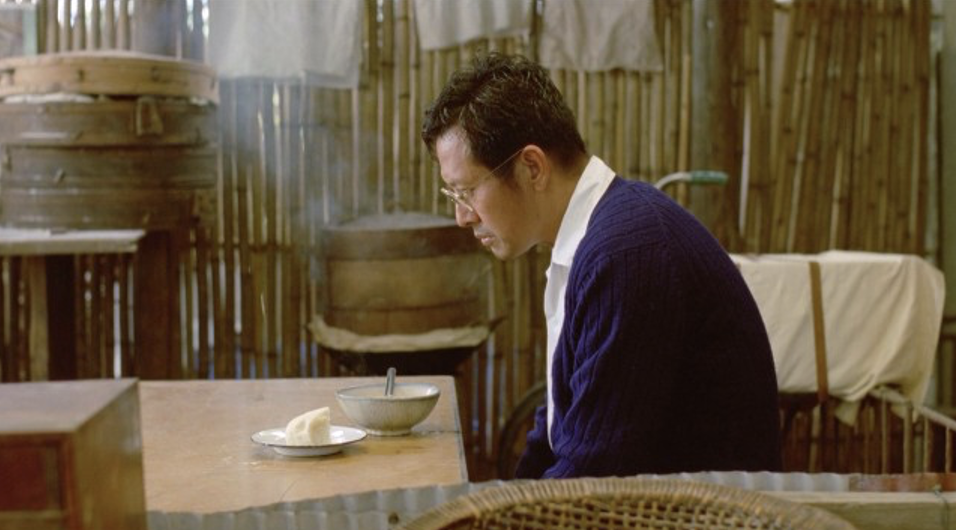
Chang Kuo-chu as the beleaguered patriarch
In one of Yang’s most intriguing gambits, the film’s second half temporarily shifts the focus from Si’r to his father, with a subplot connecting Chang Chü’s helplessness to the KMT’s Orwellian rule. Chang Chü is detained by the Garrison Command, the KMT’s dreaded secret police, and interrogated day and night about old, half-forgotten acquaintances. Yang based this episode on interviews with friends, almost all of whom had at least one family member brought in for interrogation; under the martial-law regime, even the most cursory association with a Communist, KMT critic, or Taiwan independence advocate was sufficient cause for arrest. A City of Sadness showed the KMT’s crimes against benshengren, while Yang emphasized that, in his own words, “the Nationalist regime at the time treated everyone unfairly.”
Yang’s film wasn’t the first to take this tack; Wang Tung’s Banana Paradise (1989), released within months of A City of Sadness, depicts the similar treatment of two soldiers who follow the KMT to Taiwan. But in A Brighter Summer Day, the fearful mood of the era also permeates the younger generation, as Si’r’s relationship with Ming—Honey’s ex-girlfriend—is poisoned by his relentless suspicions. By the same token, the warlike atmosphere among the gangs reflects a militarized society that talked uselessly about “counter-attacks” against the “Communist bandits.” As though to underline the point, one gang member compares an assault on his rivals to “retaking the..
176